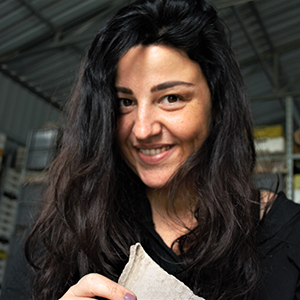Fitch Bursary Holder

Research
My research focuses on material culture production and technology in antiquity, with particular attention to dynamics of human mobility, cross-cultural contacts and migration patterns between the end of the Bronze Age and the beginning of the Archaic period in the Central and Eastern Mediterranean. Specifically, I am interested in applying holistic approaches to the study of ceramics encompassing theoretical frameworks on different scales of material and spatial analysis to identify social, economic and political dynamics at local, regional and inter-regional levels.
I received a BA in Mediterranean and Near Eastern Archaeological Heritage from the University ‘L’Orientale’ of Naples (Italy), an MPhil in Archaeology from the University ‘G. d’Annunzio’ of Chieti-Pescara (Italy) and an MSc in Archaeological Materials from the University of Sheffield (UK). I held posts as ceramic and thin section petrography specialist in different international archaeological projects in Italy, Greece, Egypt and Cyprus and as visiting researcher at UCL, Qatar (2017). In 2020 I was awarded the Fitch laboratory bursary (due to the pandemic postponed to 2021). Currently, I am a PhD student at the University of Oxford (Clarendon scholar) and the award holder of the Macmillan-Rodewald Studentship at the British Archaeological School at Athens (2021-2022).
Project
My current PhD project Understanding Greek Colonisation through material culture: pottery production and technology in Campania during the 8th and the 7th centuries BC, aims to understand how material culture was employed to promote new social and economic relations during the formative stages of the Greek ‘Colonisation’ in the Campania region (Italy). By revisiting the pottery assemblages of key sites related to the ‘Greek colonisation’, it will provide a material-based assessment of the ‘pre-Hellenic’ to ‘Early Colonial’ archaeology of the Campania region (12th to the 7th centuries) through an innovative and multidisciplinary approach. At the Fitch, I carry out a significant part of an integrated analytical program, which combines the macroscopic study of ceramics with science-based analytical techniques (thin section petrography, elemental analyses, SEM, X-ray radiography), and which has been designed to reconstruct and understand the reproduction of local pottery traditions, as well as human mobility, movements of products, and transfer of technologies between Campania and Mainland Greece.